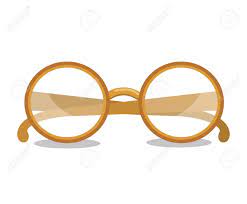PHASE 1 - Revisiting Life & Parkinson's
Dr James Parkinson spent years observing people with tremors who were shuffling around London streets. His observations were described in detail in his now famous 1817 Essay on the Shaking Palsy, that resulted in European neurologists deciding to name this phenomenon, the "shaking palsy". Then it became known as Parkinson's Disease (PD), also described as People/Persons with Parkinsons (PwP) or just plain Parkinson's. Let's go back to an early Blog Post.
[Extract (✂✂) from Post 24, July 2021] Historically, ancient health and wellness observations as well as more recent medical contexts, describe PD as a movement disorder and include categories listed below (Goetz, p1):
- 1000 BC: Indian and Chinese writings describe tremors, bradykinesia and gait;
- 1680: Sylvius de la Boë writes of rest tremor;
- 1768: Sauvages writes of festinating (a shuffling walk);
- 1817: James Parkinson publishes "An essay on the shaking palsy; and then
- 1825-1893: Jean-Martin Charcot recommends this be named Parkinson's Disease.
James Parkinson (1755-1824)
Regarding the suggestion that PD is either the result of environmental or genetic factors, and based on my own family history, I'm unable to confirm any "genetic" tendency towards my PD. I believe that mine may be "environmental", the result of external factors impacting on my brain and my dopamine production, as suggested below.
- In 1957, at the age of five, I fell out of a moving vehicle and needed to be hospitalised. My parents told me that the incident resulted in a gash on my skull that required stitches. [=HEAD TRAUMA]
- For most of my life, I was an enthusiastic DIY person. It started at school where I did carpentry which had me experimenting at home. This included interior refurbishing, i.e. building wooden items, painting and varnishing (1976-2009), painting theatre sets (1973-1980), working with large quantities (often 5 litre containers) of contact adhesive to soundproof rooms (1973-1980), and cleaning my cars' wheel rims with chemical sprays (1990-2017). [=INHALING CHEMICALS]
- We lost our son, tragically, in 1999 and it led to initial and long term trauma for my wife, my daughter and I. The initial shock was devastating and left us broken in the short-term but we learned over the medium-term to deal with that loss. [=MENTAL TRAUMA]
- In 2012 an unchanged institutional employment regulation forced me into early retirement from a permanent job at the age of 60. I spent eight months without stable employment resulting in some trauma until I found permanent employment late in 2013. [=MENTAL TRAUMA]
- In 2012 I also noticed a tremor in my right thigh. That resulted in an MRI and subsequent neurologist's diagnosis in 2013: I had PD!
In my opinion, being parkinsed is a movement disorder mind game and that may be why I chose Hamlet's opening lines of the fourth soliloquy from Shakespeare's Hamlet in my Blog title: Parkinsed: to be or not to be.
"To be, or not to be: that is the question.
Whether 'tis nobler in the mind to sufferThe slings and arrows of outrageous fortune,Or to take arms against a sea of troubles,And by opposing end them?"
💡Immediately after the 2013 diagnosis I honestly believed I would be able "to take arms against a sea of troubles" even though it might not be possible to "end them". My approach to being parkinsed was to be on a drug-free regime. Could I reverse the effects of Parkinson's by using my academic ability [BA (Hons), M.A.(Drama), M.Ed.(Computer-Assisted Education) & a D.Ed.]?
Could I fight PD with a PhD?
At university I was regarded as a practitioner researcher, generating original, personal theories from my actual practice. In this context - I was a professional development specialist, - as facilitator of the professional development of academic staff (2002-2017) at three SA universities, I also challenged staff to rethink their mental capacity and practice as academics. So, why not rethink my attitude towards PD? Below are two examples of my shifting academics' (and my own) practice as well as my attempt to ground myself with handwriting.
 |
| 14 November 2023 |
Conclusion
The references below were accessed in July 2021.
- Goetz, C.G. (2011) The History of Parkinson's Disease: early Clinical Descriptions and Neurological Therapies. Downloaded from <http://perspectivesinmedicine.cship.org> on July 16 2021.
- Parkinson, J. (1817) An Essay on the Shaking Palsy. Available at <https://neuro.psychiatryonline.org/doi/pdf/10.1176/jnp.14.2.223>. Link in post above.
- Lees, A. ( 2017) [Lees reviews Parkinsons'] An essay on the shaking palsy.




No comments:
Post a Comment